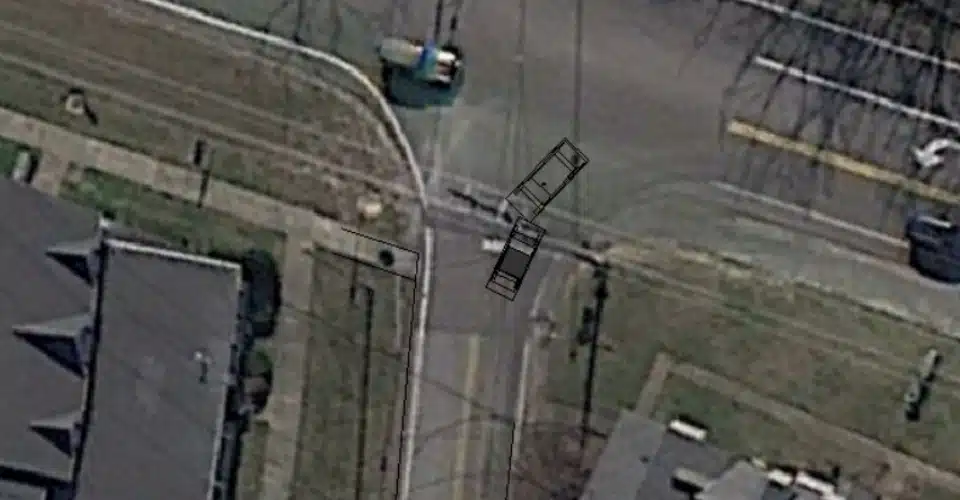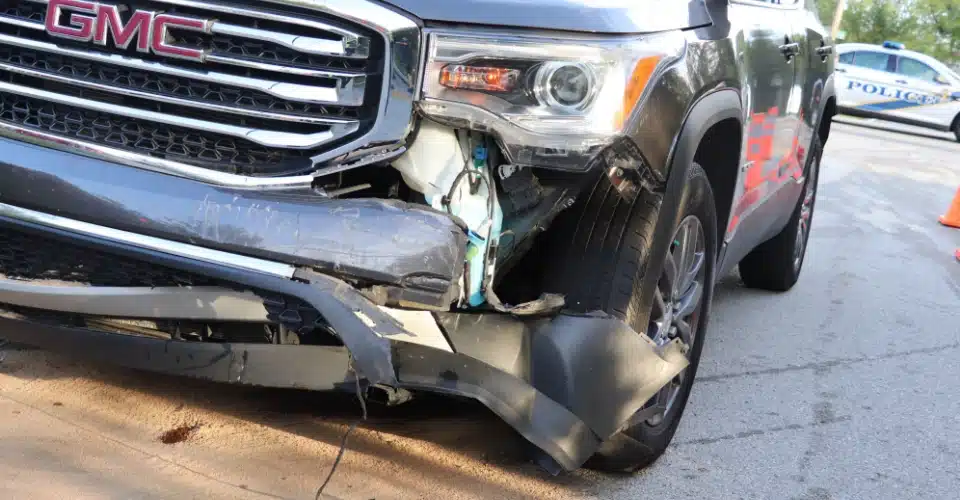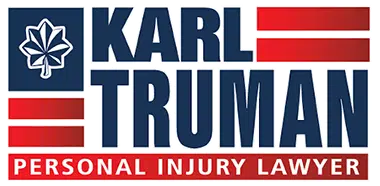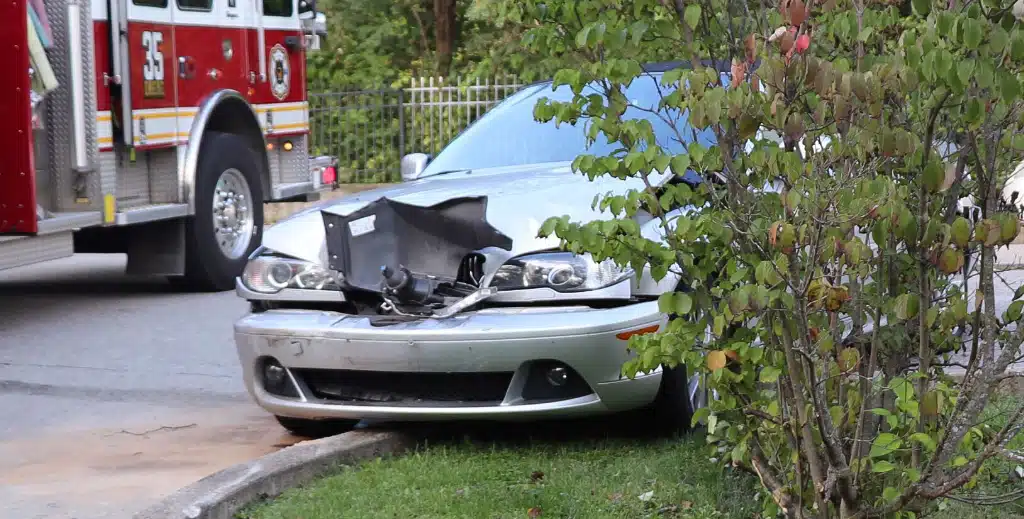There’s no way that any sum of money could ever be enough to make up for the tragic, unexpected loss of a beloved husband and father. Financial compensation alone can never make it right. But grieving families should still be able to expect fair treatment and accountability.
Unfortunately, since money is the only form of compensation available in a wrongful death case, this ultimately leads to questions about what a life is “worth.” Insurance companies will look for any way to devalue the claim and pay as little as possible.
That’s exactly what happened in this case. Roger’s death, due to a reckless driver’s careless decision, left a permanent hole in the lives of his loved ones. Yet due to his age, medical history, and a few peculiarities in the case, the insurance company refused to even make a settlement offer.
This wasn’t an easy case, but we were honored to work on behalf of Roger’s wife and family to ease their burden and fight for their right to fair treatment and compensation.
All names have been changed for privacy.

A Reckless Turn Into the Wrong Lane Ends in Tragedy
Roger, a senior citizen and loving husband and father, had stopped at a stop sign while waiting to proceed southbound across a busy state highway in Louisville.
At the same time another driver, Sally, was approaching the intersection traveling east and preparing to make a left-hand turn. With westbound vehicles heading in her direction, Sally tried to “beat” the oncoming traffic by making a quick turn.
Her decision had catastrophic consequences. Sally never checked for cross traffic, and turned sharply into the wrong lane—colliding head on with Roger’s vehicle.
Roger survived the initial crash and showed signs of consciousness, but was severely injured. Even though he was wearing his safety belt, his head hit the windshield due to the force of the impact. By the time emergency teams arrived on the scene, he was unresponsive, not breathing, and had no pulse.
He was removed from his vehicle by the fire rescue team and taken to the hospital with life-threatening injuries, including a traumatic brain injury and several spinal fractures. Despite the efforts of the first responders and doctors, Roger sadly passed away the next day.
Roger Left Behind a Loving Family and Unfulfilled Dreams
Roger’s death was devastating to his family—especially his best friend, soulmate, and wife of 48 years, Mary.
In a country where the average marriage lasts less than 10 years, Roger and Mary defied the odds and shared a true storybook relationship. He had even beaten cancer, and he and Mary were cherishing their new lease on life and looking forward to checking more items off their bucket list together.
But now, through no fault of their own, Mary had lost the love of her life, and the future they had planned, in the midst of their golden years. All because of one careless decision by a reckless, impatient driver trying to save a few seconds on her commute.
The grief and sorrow that she and their now-adult children felt over Roger’s death was almost unbearable. Although nothing could ever replace what they had lost or make things right again, Roger’s family deserved accountability and closure.
Unfortunately, the insurance company went to great lengths to evade any responsibility.
The Insurance Company Refuses to Make an Offer
In a case like Roger’s, we typically see insurance companies eager to engage in settlement negotiations. While these initial settlement offers may or may not be fair (in our opinion), usually the insurance company realizes that their client was at fault, that trials are risky, and working toward a mutually agreeable settlement is ultimately in their best interest.
Not in this case. For months, the insurance company refused to make even a single settlement offer.
The insurance company’s defense (and unwillingness to negotiate) rested on a few key points:
- One, they argued that Roger hadn’t been wearing a seatbelt and thus was partially responsible for his injury. (The “evidence” for this was the fact that his head had hit the windshield after the crash.)
- Two, they argued that Roger lost consciousness immediately and thus did not experience any conscious pain and suffering as a result of the crash.
- Three, because Roger was retired and had a history of health problems, they likely felt a jury would not award his family significant damages.
In other words, the insurance company not only disputed liability—that Sally was solely responsible—but also argued that the pain and suffering experienced by Roger (and the family he left behind) wasn’t worthy of a significant settlement.
At Karl Truman Law Office, our clients are like family to us, and we make it our mission to ensure they get the attention, care, and fairness they deserve. Our hearts were moved by Roger and Mary’s story, and we were shocked by the careless and unfair treatment Mary had received from the insurance company. We had to help her make it right.

Truman Law’s Investigation Picks Apart the Insurer’s Arguments
Truman Law conducted a thorough investigation, obtaining police reports, photos of the scene, body cam footage, crash event data recorder information, medical history, coroner’s report, and more. We quickly discovered that the insurer’s defenses could not withstand scrutiny.
Claim 1: Roger’s Seatbelt
We confirmed that Roger had indeed been wearing a seatbelt at the time of the crash. In fact, the first responder at the scene stated under oath that he had personally unhooked Roger’s seatbelt.
The defense’s argument was that Roger could not have been wearing a seatbelt at the time of the crash, because his head hit the windshield after impact. However, the intersection where Roger had stopped had a blind corner, which made it impossible to check for cross traffic from a normally seated position. A driver in Roger’s position would have to lean forward to determine if it was safe to proceed.
If Sally hit Roger’s car while he was leaning forward, his head could easily have hit the windshield despite properly wearing a safety belt. Considering the testimony from both Sally and the first responder, this is almost certainly what happened.
Claim 2: Conscious Pain and Suffering
Although the insurance company argued that Roger did not experience any conscious pain and suffering, Sally’s own 911 call revealed that Roger had been responsive and conscious in the immediate aftermath of the crash. She even told the dispatcher that Roger “kinda looked at me and just shook his head” when she spoke to him.
Considering the injuries he had sustained to his head, ribs, and spine, there is little doubt that, for as long as he remained conscious, Roger would have experienced considerable pain.
Claim 3: Roger’s Age and Health Status
As for the final defense argument? It was true that Roger was retired—so there were no lost wages to consider—and that he had a history of previous health issues. But before the crash, Roger had been living independently at home and enjoying his retirement with family and friends. Nothing in his medical history suggested that the end of his life was imminent.
But even if there had been, it would not have made his death any less senseless, tragic, or devastating. Roger had a wonderful and supportive family that loved him deeply—and Sally’s recklessness had torn him away from them.
Losing your soulmate doesn’t hurt any less after 50 years together than it would after 25 or 10. Roger’s age should have no bearing on Mary’s pain and suffering, and it was appalling that the insurance company tried to use it as an excuse to avoid a fair settlement.
Sally’s Credibility Called Into Question
Throughout the investigation, Sally’s story and statements changed and contained multiple inconsistencies with the facts.
Sally claimed in her 911 call that Roger had “cut in” while she was making her turn, and later told the responding officer that the collision had occurred in the northbound lane of the road.
However, the evidence at the scene clearly showed the collision had occurred in the southbound lane—in other words, Sally had turned far too sharply and was in the wrong lane when she hit Roger’s car, at approximately 30 miles per hour. The final collision analysis conducted by the Louisville Metro Police placed the fault squarely on Sally’s reckless driving, noting that she failed to check for southbound traffic, turned into the wrong lane, and failed to yield.
The defense had another problem. Despite the fact that Sally was a nurse, her 911 call was almost chillingly cold, showing little empathy or concern for the man whose death she ultimately caused. She also did nothing to help Roger after the crash.
The Importance of Testing Your Case With Focus Groups
In our opinion, Roger’s family had a very strong case. But we also knew that juries and trials can be unpredictable. If you don’t argue your case well, and present your evidence and arguments in the best order, juries can get hung up on little details.
For example, they might be skeptical that a relatively low-speed crash could cause so much damage, or that Roger’s head really could have hit the windshield while still wearing a safety belt. If you don’t explain the science to them in the right way, or don’t do it early enough in the trial, they might reach an incorrect conclusion. And once they do, it’s very hard to change their minds.
We wanted to make sure we went into any potential trial as prepared as possible. We conducted a focus group of mock jurors to test out our arguments and case themes, identify hidden biases or hangups that could trip up potential jurors, and figure out the best way to present the case to ensure Mary and her family got a fair result.
Our Hard Work Leads to a Good Legal Result
It truly was an honor to serve Mary and her family in this case, and our hard work and dedication ultimately yielded a positive result in their wrongful death lawsuit. After months of stonewalling Mary, the insurance company finally made a settlement offer that she was happy with. This spared her the stress and potential heartache of a trial, and allowed her and her family to move on to the next chapter in their lives.
Of course, the financial result is only one part of the story. At Truman Law Office, we work hard to get our clients the best possible legal results. But what really motivates us is making sure our clients feel understood and cared for, and know that they have a trustworthy partner looking out for them. Each client has their own set of needs, goals, and motivations for their personal injury or wrongful death case. Our job is to listen to you, put your best interests first, fight for you, and help you make good decisions about your case that make the most sense for your situation.
Losing a loved one is always tragic, and wrongful death cases are emotionally exhausting for the families of victims. Our clients need space to grieve, focus on their emotional wellbeing, and rebuild their lives—not fight a stubborn insurance company or focus on the minute details of a legal case. Hiring the right attorney isn’t just about a check at the end of the case. It’s about the relief our clients feel, knowing that their case is in good hands.
If you’d like to speak with one of our attorneys about a personal injury or wrongful death that you or a loved one has experienced, please give us a call at (812) 220-3484.
The content provided here is for informational purposes only and should not be construed as legal advice on any subject.

















